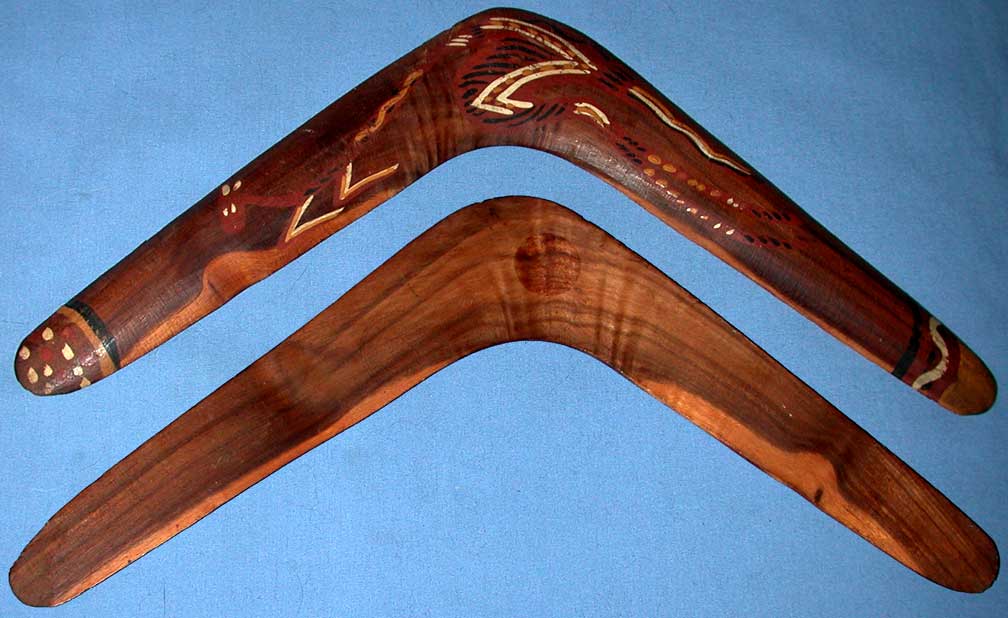Item TB106
This Item Sold on 15 January 2008
for $58
Similar artifacts for sale can be found on the Aboriginal
Boomerangs link.
Historical Pricing information for this item and similar artifacts
can be found at: Historical Artifact
Prices
This returning style boomerang with Aboriginal art
decorations was made for the tourist trade by Aborigines.
This is an early one. It was probably made in Queensland in
the 1940s or 1950s. There is a circular mark on the reverse
side that was probably made by a removed label designating
this as being made by Aborigines in Queensland. This one is
most likely not a true returner. It would be better to
display it than to throw it. The artwork, which depicts a
kangaroo, is nicely done and the paint matches natural ochre
pigment colors. The grain runs along the curve of the
boomerang as it is supposed to do on a real Aboriginal
boomerang. The grain is also very beautiful. This boomerang
is very heavy, so it is probably Black Wattle. It is in very
good condition and it would make a great display. Span = 36
cm Weight = 122 gm
Australian Aborigines are well known for making boomerangs.
The majority of the Aborigines had the technology to make
throwsticks, or non-returning boomerangs. Only a small
percentage of the tribal groups knew how to make true
returners and most of these came from the eastern coastal
regions of Queensland, New South Wales and Victoria. During
the past century, the majority of the Aborigines came out of
the bush and were somewhat assimilated into the European
man's culture. Many Aborigines began making returning style
boomerangs to sell to tourists. The earliest ones were well
made out of natural timber and with the grain following the
curvature of the boomerang. Today, most hardwood boomerang
are cut out of a large board and the grain is usually
straight and running parallel to a line spanning the tips of
the blades. Boomerangs that are made with the grain
following the contour of the blades are much stronger and
more valuable. In addition, some boomerangs have good
airfoiling. The majority do not. Most "tourist boomerangs"
have painted upper surfaces that display Australian animals
and decorative lines and/or geometric patterns. Most
pre-contact returners have no artwork or the artwork is
simple and scratched into the surface. It is easy to tell
the tourist boomerang from the valuable ethnographic
artifact. However, tourist boomerangs that are made properly
with the grain running along the contour and with good
airfoiling and art work do have good collectable value,
especially if they are made by a famous Aboriginal artists,
like Bill Onus or Joe Timbery.

Back to: Collectable Artifacts | Aboriginal Boomerangs | Historical Artifact Prices | Primitive Technology | contact: Ted Bailey